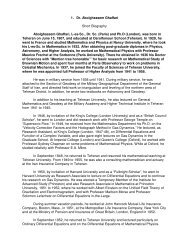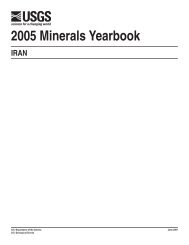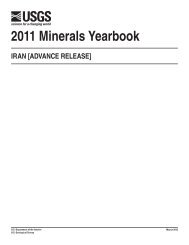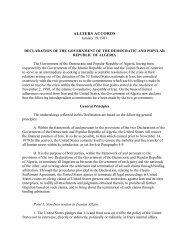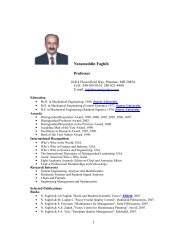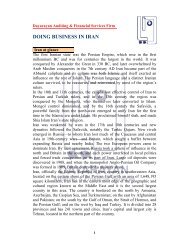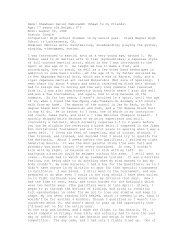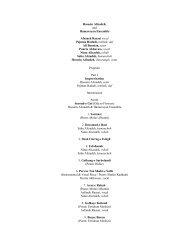Create successful ePaper yourself
Turn your PDF publications into a flip-book with our unique Google optimized e-Paper software.
<strong>Iran</strong> <strong>Country</strong> <strong>Analysis</strong> <strong>Brief</strong><br />
planned 56-inch, 300-mile, $500 million, IGAT-3 pipeline (a section of which<br />
is now being built by Russian and local contractors), as well as planned IGAT-<br />
4 and IGAT-5 lines. Gas also will be reinjected to boost oil output at the<br />
mature Agha Jari field (output peaked at 1 million bbl/d in 1974, but has since<br />
fallen to 200,000 bbl/d), and possibly the Ahwaz and Mansouri fields (which<br />
make up part of the huge Bangestan reservoir in the southwest Khuzestan<br />
region).<br />
Besides condensate production and reinjection/enhanced oil recovery, South<br />
<strong>Pars</strong> natural gas also is intended for domestic consumption and for export, by<br />
pipeline and also possibly by liquefied natural gas (LNG) tanker. Sales from<br />
South <strong>Pars</strong> could earn <strong>Iran</strong> as much as $11 billion per year over 30 years,<br />
according to <strong>Iran</strong>'s Oil Ministry. However, <strong>Iran</strong> likely will face stiff<br />
competition for LNG customers, particularly given the fact that many other<br />
LNG suppliers (Oman, Qatar, the UAE) are already players, having locked up<br />
much of the Far East market. U.S. sanctions also mean that <strong>Iran</strong> is limited to<br />
non-U.S. liquefaction technology, which is an important consideration given<br />
that most LNG plants use processes developed by U.S. companies. Currently,<br />
<strong>Iran</strong> has no LNG facilities.<br />
In February 2003, Oil Minister Zanganeh officially inaugurated Phases 2 and<br />
3 of South <strong>Pars</strong> development, which began to come onstream in March 2002.<br />
A consortium led by Total developed the project at a cost of approximately $2<br />
billion. Already, Phases 2 and 3 reportedly are producing over 2 Bcf/d of<br />
natural gas for domestic use, and around 85,000 bbl/d of condensates. Twin<br />
undersea pipelines carry gas from South <strong>Pars</strong> to onshore facilities at<br />
Asaluyeh. In March 2002, Hyundai signed another contract, this one for $1<br />
billion, to build four natural gas processing trains. The Asaluyeh facility<br />
comprises four natural gas processing trains, sulphur recovery units,<br />
condensate stabilization and storage units, and export compressors.<br />
Phases 4 and 5, estimated to cost $1.9 billion each, are being handled by Eni<br />
and Petropars, and involve construction (by Agip and Petropars) of onshore<br />
treatment facilities at the port of Bandar Asaluyeh. These two phases began<br />
http://www.eia.doe.gov/cabs/iran.html (15 of 32) [3/30/2005 8:12:05 AM]



